Breast Cancer and Nutrition
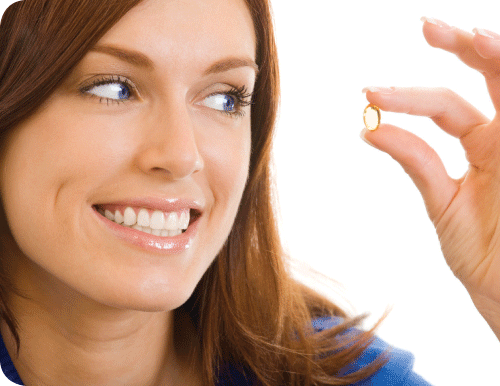
Vitamin E: Women consuming other forms of vitamin E called tocotrienols have been found to have dramatically lower risk of contracting breast cancer – 50 percent less risk for women without family history of breast cancer, and as much as 90 percent for pre-menopausal women with family history.
Copyright© 007 Breasts
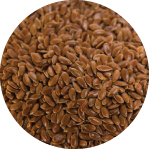 Flaxseed: Also known as linseed, Flaxseed is an ancient grain that may have originated in Egypt. The seeds, oil, and seed meal can be used in many ways. Flaxseeds contain phytoestrogens, which may reduce your risk of breast cancer and possibly prevent a recurrence. They have two anti-cancer components: lignans and an omega-3 fat called "alphalinolenic acid" (ALA). Flaxseeds may also be helpful in reducing your risk of heart disease, osteoporosis, breast and endometrial cancers. Flaxseed oil has been used for the relief of hot flashes, breast pain, arthritis pain, and pain related to constipation. Several studies have been done to determine how the phytoestrogens in flaxseeds may help cancer. One theory compares the estrogen-receptor blocking ability of flaxseeds with estrogen-receptor modulation drugs. The weak plant-
Flaxseed: Also known as linseed, Flaxseed is an ancient grain that may have originated in Egypt. The seeds, oil, and seed meal can be used in many ways. Flaxseeds contain phytoestrogens, which may reduce your risk of breast cancer and possibly prevent a recurrence. They have two anti-cancer components: lignans and an omega-3 fat called "alphalinolenic acid" (ALA). Flaxseeds may also be helpful in reducing your risk of heart disease, osteoporosis, breast and endometrial cancers. Flaxseed oil has been used for the relief of hot flashes, breast pain, arthritis pain, and pain related to constipation. Several studies have been done to determine how the phytoestrogens in flaxseeds may help cancer. One theory compares the estrogen-receptor blocking ability of flaxseeds with estrogen-receptor modulation drugs. The weak plant-
based estrogens block the estrogen receptors on cells within breast tissue, starving them of full-strength female estrogen, possibly stopping tumor growth and preventing cell damage. This effect may be most effective for younger, pre-menopausal women with estrogen-receptor negative cancers.
Copyright© About.com
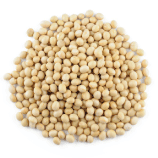 Soy: In laboratory studies, animal studies, and research looking at groups of people and what they eat, certain chemical components of soy have been linked to a lower risk of breast and prostate cancer. Most studies that have shown benefit have used whole soy protein rather than soy components and extracts. As a protein source, soybean products are promoted as a healthier alternative to meat and as an aid to weight loss. Soy products are also used to lower cholesterol and blood pressure, and to relieve symptoms of menopause and osteoporosis. Soy protein in a diet low in saturated fat and cholesterol is also promoted as a method to help reduce the risk of heart disease. Soy can be consumed in many forms with tofu, soy milk, roasted soybeans, soy powder, and textured vegetable protein being some of the more popular. Soy protein powders and bars are available in nutrition stores and health food markets.
Soy: In laboratory studies, animal studies, and research looking at groups of people and what they eat, certain chemical components of soy have been linked to a lower risk of breast and prostate cancer. Most studies that have shown benefit have used whole soy protein rather than soy components and extracts. As a protein source, soybean products are promoted as a healthier alternative to meat and as an aid to weight loss. Soy products are also used to lower cholesterol and blood pressure, and to relieve symptoms of menopause and osteoporosis. Soy protein in a diet low in saturated fat and cholesterol is also promoted as a method to help reduce the risk of heart disease. Soy can be consumed in many forms with tofu, soy milk, roasted soybeans, soy powder, and textured vegetable protein being some of the more popular. Soy protein powders and bars are available in nutrition stores and health food markets.
Copyright© The American Cancer Society®
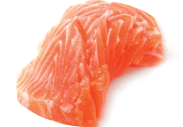 Omega-3 fatty acids: Omega-3 fatty acids are considered essential fatty acids. They are necessary for human health but the body cannot make them – you have to get them through food. Omega-3 fatty acids can be found in fish, such as salmon, tuna, and halibut, other seafood including algae and krill, some plants, and nut oils. Also known as polyunsaturated fatty acids (PUFAs), omega-3 fatty acids play a crucial role in brain function as well as normal growth and development. They have also become popular because they may reduce the risk of heart disease. Research shows that omega-3 fatty acids reduce inflammation and may help lower risk of chronic diseases such as heart disease, cancer, and arthritis. Although not all experts agree, women who eat foods rich in omega-3 fatty acids over many years may be less likely to develop breast cancer. More research is needed to understand the effect that omega-3 fatty acids may have on the prevention of breast cancer.
Omega-3 fatty acids: Omega-3 fatty acids are considered essential fatty acids. They are necessary for human health but the body cannot make them – you have to get them through food. Omega-3 fatty acids can be found in fish, such as salmon, tuna, and halibut, other seafood including algae and krill, some plants, and nut oils. Also known as polyunsaturated fatty acids (PUFAs), omega-3 fatty acids play a crucial role in brain function as well as normal growth and development. They have also become popular because they may reduce the risk of heart disease. Research shows that omega-3 fatty acids reduce inflammation and may help lower risk of chronic diseases such as heart disease, cancer, and arthritis. Although not all experts agree, women who eat foods rich in omega-3 fatty acids over many years may be less likely to develop breast cancer. More research is needed to understand the effect that omega-3 fatty acids may have on the prevention of breast cancer.
Copyright© 2010 University of Maryland Medical Center
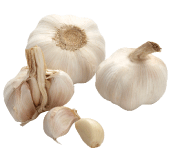 Garlic: Garlic is a vegetable commonly used to enhance the flavor of foods. Garlic is currently under study for its ability to reduce cancer risk. However, there is not enough evidence at this time to support eating large amounts of garlic or taking garlic supplements for cancer prevention. It is reasonable to include garlic as part of a balanced diet, unless one has a particular health problem or is taking medication that has been shown to be adversely affected by garlic. Garlic and garlic supplements are sometimes promoted to prevent or treat cancer. Several compounds in garlic may have anti-cancer properties, but compounds of one type in particular – the allyl sulfur compounds – are said to play a major role. These compounds reportedly help the body get rid of cancer causing chemicals and help cause cancer cells to die naturally, a process called apoptosis. There have also been claims that garlic has immune boosting properties that may reduce
Garlic: Garlic is a vegetable commonly used to enhance the flavor of foods. Garlic is currently under study for its ability to reduce cancer risk. However, there is not enough evidence at this time to support eating large amounts of garlic or taking garlic supplements for cancer prevention. It is reasonable to include garlic as part of a balanced diet, unless one has a particular health problem or is taking medication that has been shown to be adversely affected by garlic. Garlic and garlic supplements are sometimes promoted to prevent or treat cancer. Several compounds in garlic may have anti-cancer properties, but compounds of one type in particular – the allyl sulfur compounds – are said to play a major role. These compounds reportedly help the body get rid of cancer causing chemicals and help cause cancer cells to die naturally, a process called apoptosis. There have also been claims that garlic has immune boosting properties that may reduce
cancer cell growth and help the body fight off diseases such as colds or the flu. These claims are currently being studied. Proponents claim garlic can be used to treat bacterial, yeast, fungal, and
parasitic infections and can be used to treat high blood sugar levels. They also say it has properties that may help stomach and abdominal problems. Garlic has also been claimed to reduce risk of heart disease, lower cholesterol, and reduce blood pressure.
Copyright© The American Cancer Society®